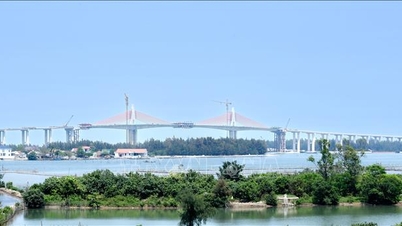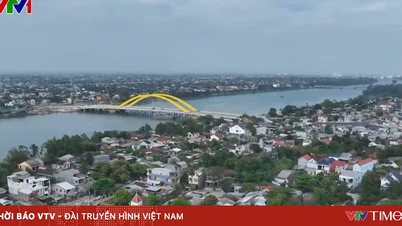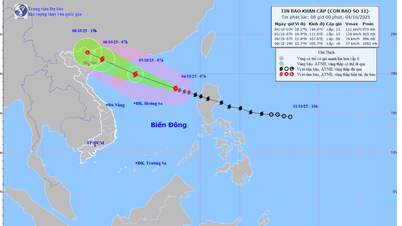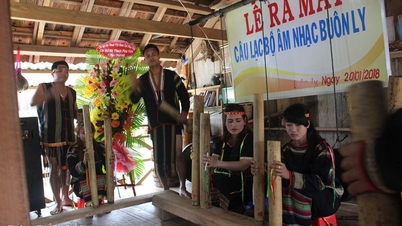 |
| A group of experts conducted a field survey. Photo: Faculty of History, University of Sciences , Hue University |
On August 14, a representative of the Faculty of History (University of Sciences, Hue University) said that the unit is coordinating with experts from Japan to conduct a field survey at the Loi Citadel relic. This is a continuation of the previous research cooperation program between the two sides.
Accordingly, the delegation of experts from Japan includes officers and lecturers from Rikkyo University (Tokyo), Tokyo Archaeological Research Institute, Waseda University (Tokyo), Kyushu University (Fukuoka), and Kashihara Archaeological Institute.
This field survey is expected to last nearly a week. Accordingly, the delegation will focus on surveying the Citadel of Loi in detail, mapping the locations of the citadel walls, and creating a digital elevation model reflecting the terrain around the relic. In addition, applying modern methods such as magnetism and geodesy using GIS technology to draw a diagram of the citadel's structure. After the survey, the Japanese expert delegation will also bring some Champa brick samples collected at Citadel of Loi from previous archaeological excavations that have been preserved to Japan for analysis using specialized magnetic measuring equipment.
A representative of the Faculty of History (University of Sciences, Hue University) said that the results of this field research and survey will be widely shared through international interdisciplinary seminars and conferences on the Loi Citadel and Champa cultural heritage in the near future. These research results not only contribute to enhancing academic value, but also play an important role in raising community awareness and preserving local cultural heritage.
According to experts, Loi Citadel is a military citadel of the Cham people, located on Long Tho hill. The citadel has a square shape, a perimeter of about 2km with a closed structure on 4 sides, the citadel is located in the directions of West - South - East - North. Loi Citadel is relatively large in scale, dug, built solidly, taking full advantage of the natural terrain (with Huong River as a moat) to create a solid defensive structure. In 2015, Loi Citadel was recognized as a National Monument.
Source: https://huengaynay.vn/van-hoa-nghe-thuat/thong-tin-van-hoa/doan-nghien-cuu-nhat-ban-khao-sat-thuc-dia-di-tich-thanh-loi-156713.html



![[Photo] Solemn opening of the 8th Congress of the Central Public Security Party Committee, term 2025-2030](https://vphoto.vietnam.vn/thumb/1200x675/vietnam/resource/IMAGE/2025/10/4/f3b00fb779f44979809441a4dac5c7df)


![[Photo] General Secretary To Lam attends the 8th Congress of the Central Public Security Party Committee](https://vphoto.vietnam.vn/thumb/1200x675/vietnam/resource/IMAGE/2025/10/4/79fadf490f674dc483794f2d955f6045)
![[Photo] Bustling Mid-Autumn Festival at the Museum of Ethnology](https://vphoto.vietnam.vn/thumb/1200x675/vietnam/resource/IMAGE/2025/10/4/da8d5927734d4ca58e3eced14bc435a3)






















































![[VIDEO] Summary of Petrovietnam's 50th Anniversary Ceremony](https://vphoto.vietnam.vn/thumb/402x226/vietnam/resource/IMAGE/2025/10/4/abe133bdb8114793a16d4fe3e5bd0f12)

![[VIDEO] GENERAL SECRETARY TO LAM AWARDS PETROVIETNAM 8 GOLDEN WORDS: "PIONEER - EXCELLENT - SUSTAINABLE - GLOBAL"](https://vphoto.vietnam.vn/thumb/402x226/vietnam/resource/IMAGE/2025/7/23/c2fdb48863e846cfa9fb8e6ea9cf44e7)































Comment (0)